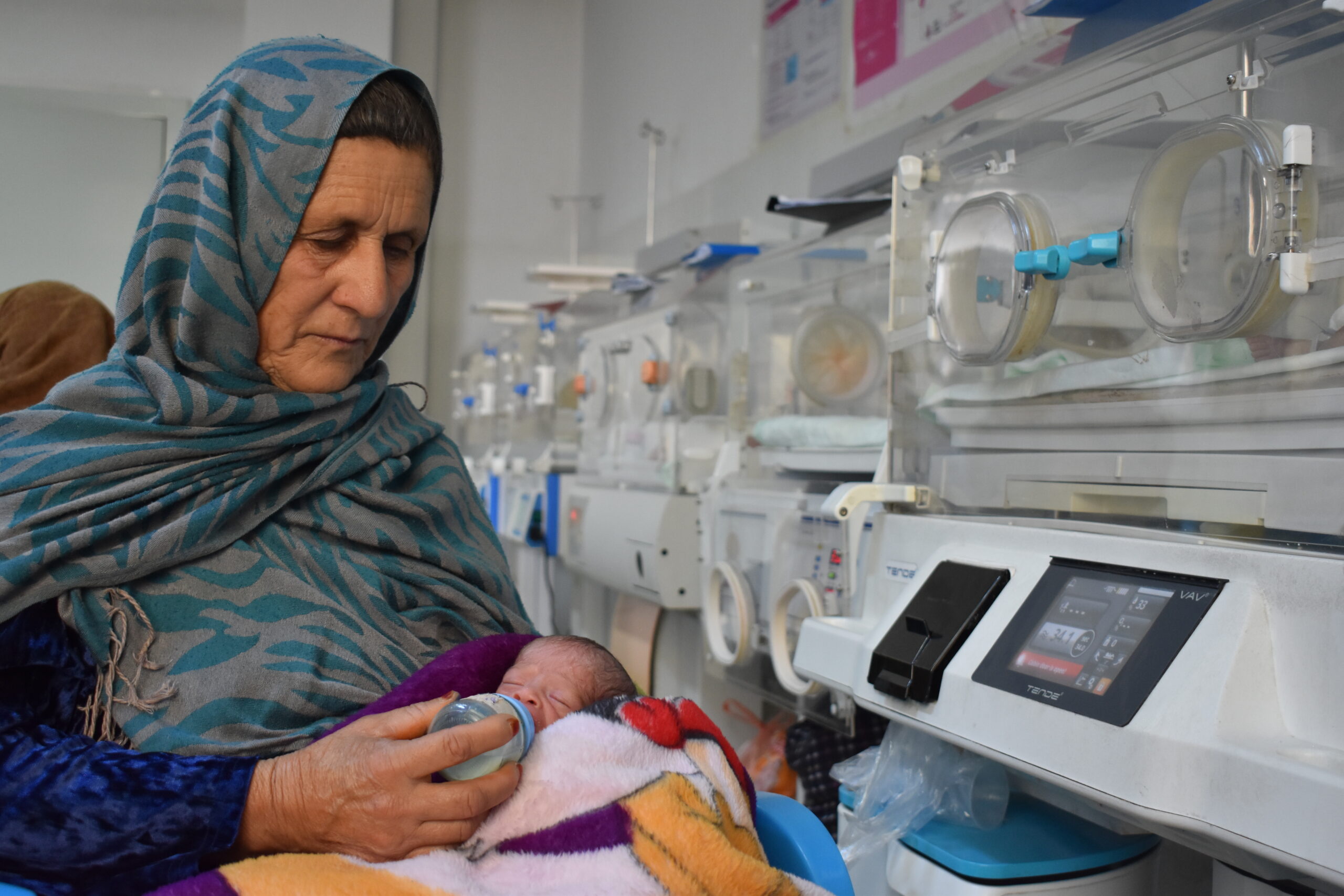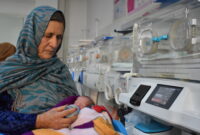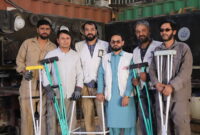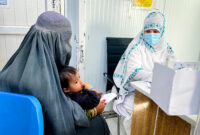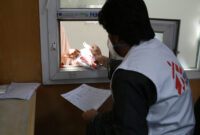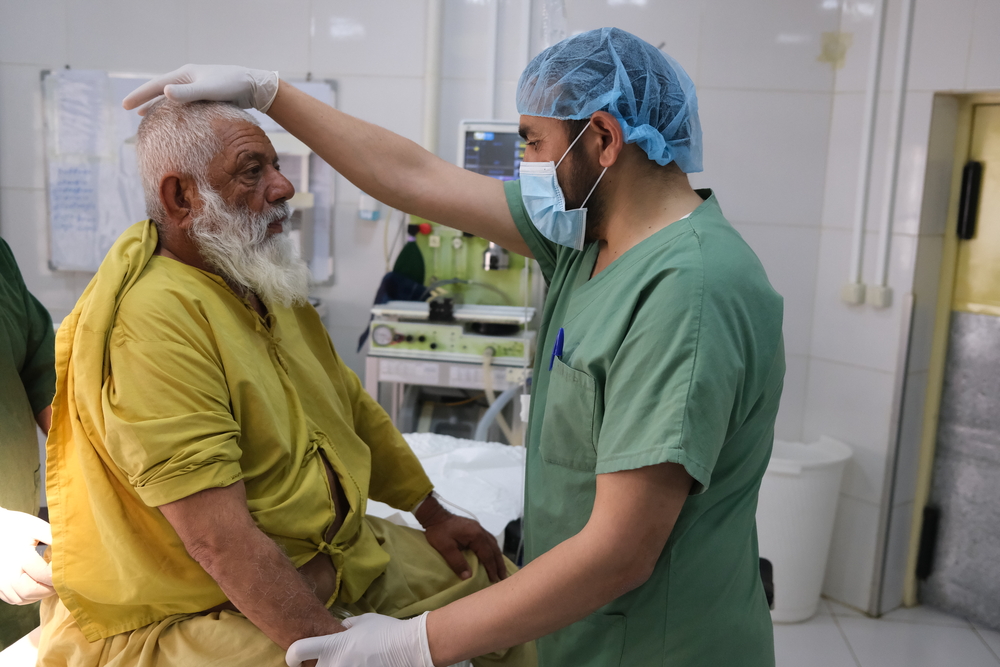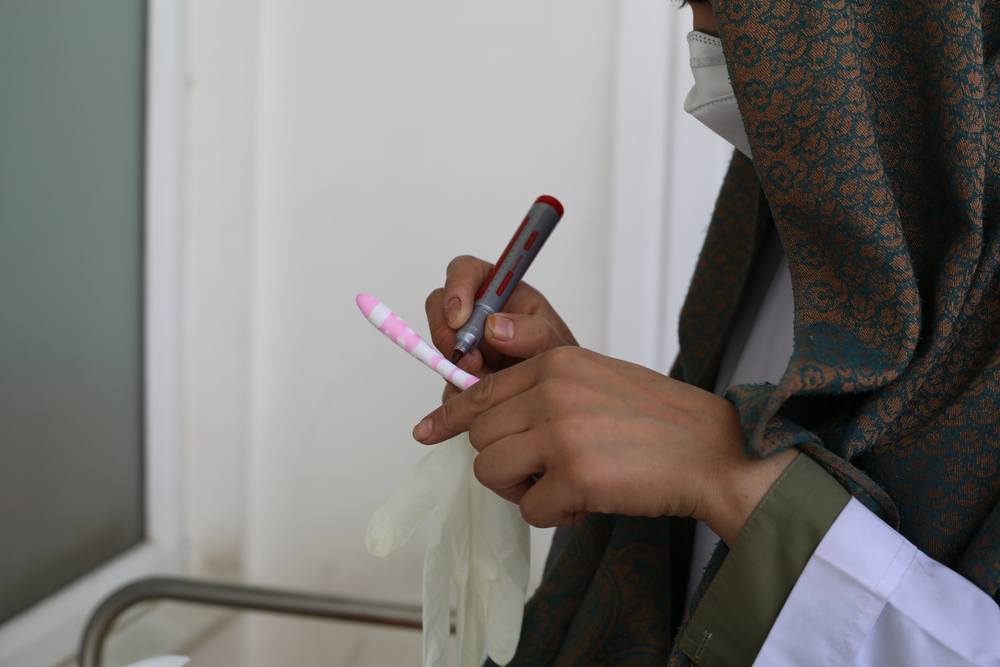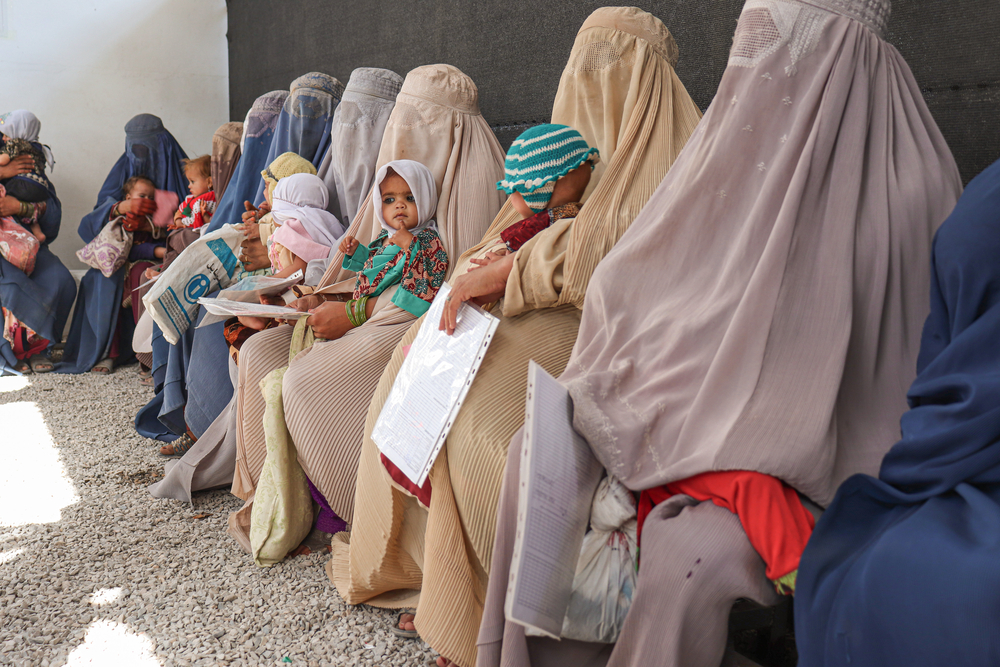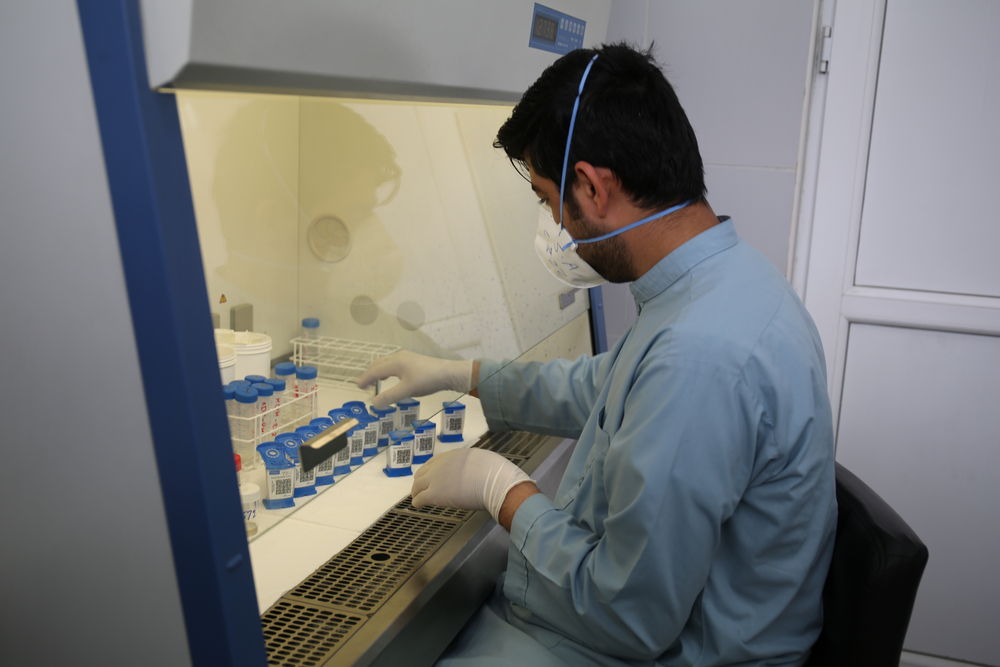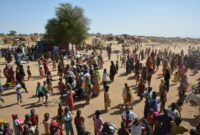Afghanistan: Pressure grows on hospitals, as pediatric patient numbers rise
Children share beds as patients stream in, needing urgent, complex medical care.
The sound of crying and beeping medical devices fills the small room. Nurses rush from bed to bed, checking vital signs. Mothers push oxygen masks onto the faces of their children.
The emergency room (ER) doctor bursts through the swinging doors of the pediatric ER in Boost hospital in Helmand.
“I have 17 patients waiting to be admitted, but nowhere to put them,” says Ahmed*, an MSF ER doctor.
It’s 6 p.m. and the night shift has only just begun. Every bed in the pediatric department is full. They are often shared by two patients and the next wave is already arriving.
“This is a crazy time for us. Day by day, more and more patients are coming,” says Ahmed.
The number of children under five coming to the ER triage at Boost hospital has more than doubled since 2020, rising from 53,923 to 122,335 in 2024. In April of this year, 13,738 children under five were seen – the highest monthly number of ER consultations since at least 2020.
Finding the space, time and resources to treat the growing number of children is a challenge. They arrive with life-threatening conditions like sepsis, respiratory failure and severe malnutrition.
This increase in pediatric patients is not just happening in Helmand, though. Health facilities are facing similar pressures elsewhere in Afghanistan, including the Mazar-i-Sharif regional hospital in Balkh province and the Herat regional hospital in Herat.
“Families are struggling to get the healthcare they need,” says Julie Paquereau, an MSF medical coordinator in Afghanistan. “Many health facilities at all levels struggle with insufficient staffing and a lack of basic medications and diagnostic equipment.”
“Lack of access will push more infants and children with life-threatening conditions to already overburdened provincial and regional hospitals, including the ones MSF supports. And some may never access care, unable to reach a health facility.”
Julie Paquereau, an MSF medical coordinator in Afghanistan
This was already the situation before U.S. foreign aid was halted earlier this year and nearly $1.37 billion in funding was cancelled for U.S. Agency for International Development (USAID) projects in Afghanistan, according to an estimate by the U.S. Special Inspector General for Afghanistan Reconstruction.
Since then, some 422 health facilities in Afghanistan have suspended their activities or closed their doors, affecting healthcare access for more than 3 million people as of June 10, according to the World Health Organization.
“As these facilities close or reduce their activities, this will reduce the availability of basic health services for women and children in particular and they will have to wait longer or travel further to receive treatment,” says Paquereau. “Lack of access will push more infants and children with life-threatening conditions to already overburdened provincial and regional hospitals, including the ones MSF supports. And some may never access care, unable to reach a health facility.”
Between consultations with newly arrived children in the ER, Ahmed gets on the phone, trying to find space in the pediatric and neonatal intensive care units elsewhere in Boost hospital. Other staff members call nearby hospitals to see if they have free beds.
“If we don’t find space, then they will stay here,” says Ahmed. “Some patients stay in the emergency room for one or two days.”
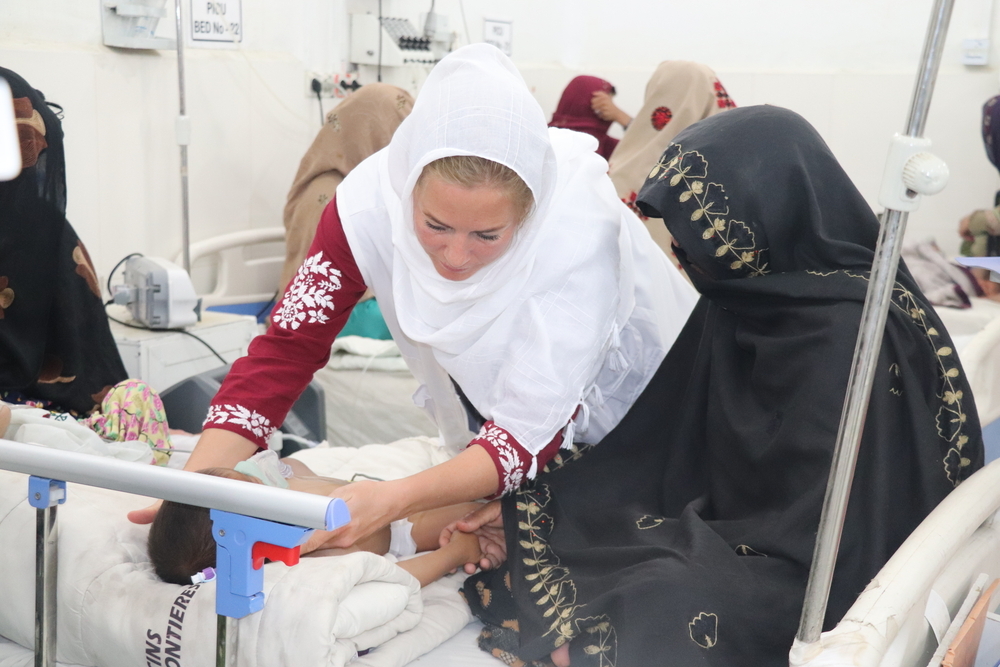
Increasing number of people at triage in Herat
In another hospital some 500 kilometres to the northwest, women crowd in the large white tent that makes up the pediatric triage at the Herat regional hospital, children clinging to their arms and legs. Some families spill outside, waiting their turn to speak to the registrar.
The number of families streaming into the pediatric triage has been growing for years. On an average day in 2025, triage nurses see 1,300 patients. Some days, more than 2,000 infants and children arrive, waiting to be seen. Many of the children are not in critical condition and their caretakers should be seeking care at basic health clinics.
“Mothers are bringing their children out of concern that their condition might worsen,” says Jameela*, an MSF nurse working in the pediatric triage. “They feel like they have nowhere else to go. Parents are telling us they do not find sufficient services at local clinics and cannot afford treatment at private clinics, so they come here where MSF provides free care.”
“Many families tell us they don’t have money for transportation to the hospital, so they’re waiting to see if their child recovers, or if they can find the money. It results in delayed care and worsened conditions.”
Jameela, MSF nurse working in the pediatric triage
This is creating a lot of pressure on the already busy triage nurses, who are also seeing an increase in very critical patients coming with life-threatening conditions.
In the first five months of 2025, an average of 354 children received consultations in the ER every day. That’s an increase of 27 per cent, compared to the same period in 2024.
“Many families tell us they don’t have money for transportation to the hospital, so they’re waiting to see if their child recovers, or if they can find the money,” says Jameela. “It results in delayed care and worsened conditions.”
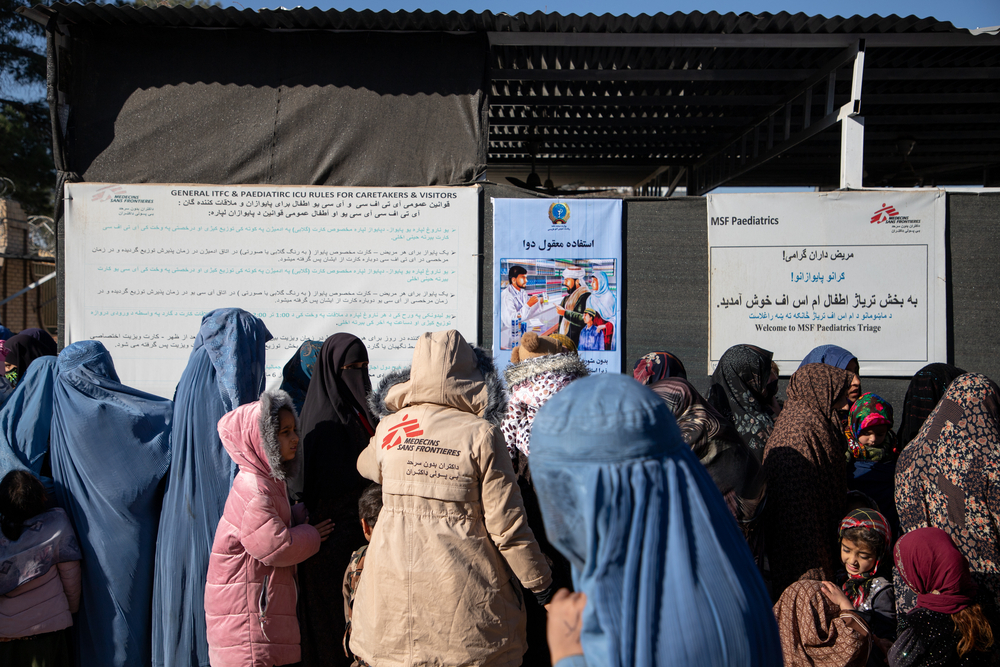
Delaying care until paid
Sitting cross-legged on their designated half of the bed in the pediatric intensive care unit at Boost hospital, Zarmina holds the hand of her seven-month-old daughter, Asma.
Three weeks ago, Asma stopped breastfeeding and developed a fever. She had stomach pain and diarrhea, but Zarmina did not have any money. Her husband has a disability and cannot work.
“I had some work sewing for a woman, but she would only pay me when I finished the job,” says Zarmina. “I sewed as fast as I could, but by the time I finished, Asma had become much worse.”
Asma was already ill for two weeks before Zarmina could take her to a doctor.
“We took her to three or four different doctors,” says Zarmina. “They gave us medicine that cost 1,500 Afghanis [roughly $30]. We finished the medicine, but it didn’t help her.”
With all her money gone, Zarmina says she was out of hope. Then her brother took them to Boost hospital, where Asma was admitted and has been receiving treatment for nine days already.
“Now, she is no longer having seizures,” says Zarmina. “The doctors know what they’re doing. If she gets better, I’ll wait and then take her home. Even if it takes time, I just want her to get well.”
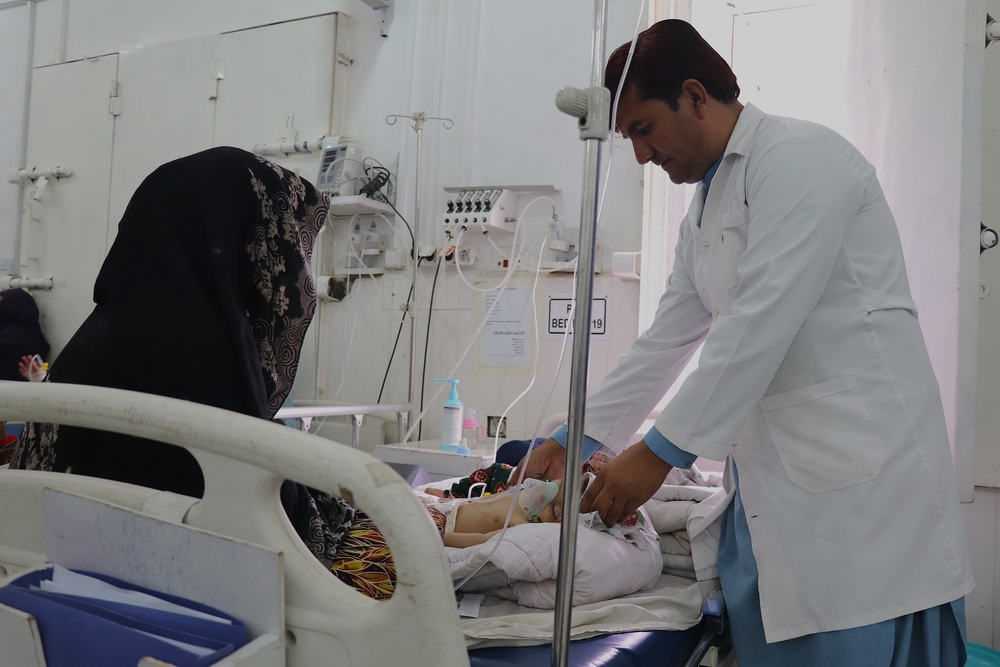
Patients coming later and in more critical condition
On the other side of the country, Fareed*, a physician, sees many patients like Zarmina in the pediatric department of the Mazar-i-Sharif regional hospital, in the northern Afghan province of Balkh.
In May, an average of 51 people arrived every day in critical condition, requiring immediate treatment.
“Many children have conditions that have become life-threatening because families couldn’t access treatment earlier,” says Fareed. That could be for a range of reasons, including not enough money for transportation or medication, not realizing the severity of the illness and no availability of a mahram (male chaperone) to accompany the child and female relative to the hospital.
“We advise parents to bring their children to the nearest clinic as soon as they see symptoms of a disease,” says Fareed, even as he acknowledges how difficult it can be for families to reach health services. “Timely treatment is crucial to avoid situations where it can become life-threatening for the children.”
Back at Boost hospital in Helmand, Ahmed walks out of the ER the next morning – tired at the end of his night shift, but with a smile on his face.
MSF and public health staff referred some patients to other hospitals and were able to find enough beds in the pediatric and neonatal wards.
None of the patients spent the night in the ER.
“Hopefully, it won’t be so busy tonight,” he says. But it’s a new day, meaning hundreds of people will come through the doors, requiring urgent, life-saving treatment.
The number of critically ill children is expected to increase over the coming weeks, as cases of malnutrition start climbing toward the seasonal peak in July.
*Name changed.
